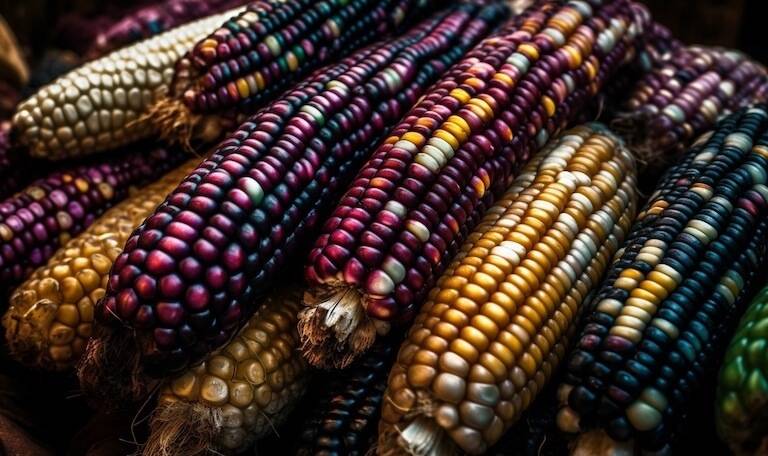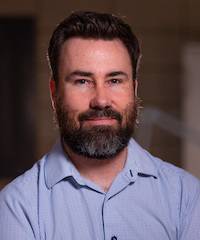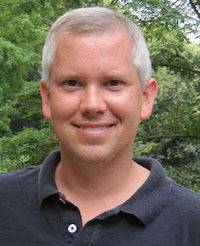Iowa State Researchers Receive 2023 Bridging the Divide Grant to Investigate the Evolutionary Legacy of Maize
Posted Jun 29, 2023

Posted Jun 29, 2023

A team of Iowa State University researchers bringing together the fields of archaeology and genetics has been selected to receive the 2023 Bridging the Divide seed grant to tackle unanswered questions about the evolution of maize and the ancient societies that farmed it.
The Bridging the Divide program aims to holistically address societal problems by fostering collaboration among researchers in design, arts, humanities, and social sciences and researchers in STEM disciplines. The program is administered by the Iowa State University Office of the Vice President for Research (OVPR) in partnership with the Center for Excellence in the Arts and Humanities (CEAH). Assistant professor of anthropology and archaeologist Andrew Somerville, associate professor of ecology, evolution, and organismal biology (EEOB) Matthew Hufford, and EEOB Ph.D. student Heather Chamberlain-Irwin have received the annual award for 2023. They will receive $49,000 in institutional funding over two years to examine, radiocarbon date, and DNA sequence maize cobs excavated from archaeological settlements of southern Peru, with the hope of answering broad questions about corn domestication and accompanying societal change.
“The Bridging the Divide seed grant promotes interdisciplinary research, joining together diverse methodologies and novel perspectives to answer questions that transcend conventional boundaries,” said CEAH Director Matthew Sivils. “We commend Somerville, Hufford, and Chamberlain-Irwin for their important work, which investigates the complex cultural influences that shaped the early human domestication of corn, influences that have echoed across the centuries.”
Corn plays a prominent role in human nutrition and the global economy, particularly within the state of Iowa, and is widely considered to be one of the most important grains in the modern world. But despite the plant’s critical significance, how the earliest domesticated maize ultimately became the field corn that is a key nutritional component of both human and livestock diets — and how the plant made its way from its original home in Mexico to the rest of the world — remains largely a mystery.
Archaeological and genetic research has provided a broad understanding of the history of maize, with the earliest botanical evidence of the plant dating back 9,000 years to western Mexico. Research has also established that over time, maize arrived in South America — more specifically Peru — where it was farmed by many early agricultural societies, including the Huaracane people (1500 B.C.) who used small-scale floodplain agriculture. Later, the Tiwanaku people of Bolivia practiced a more intensive form of maize-based agriculture. However, as the Huaracane peoples ultimately disappeared from the archaeological record and the Tiwanaku political system collapsed around A.D. 1000, little more is known about the domestication, dispersal, geographic, and cultural background of corn during this time period.
Through their Bridging the Divide project, Somerville, Hufford, and Chamberlain-Irwin intend to increase understanding of the evolutionary legacy of maize in South America by combining their respective skill sets in archaeology and maize genetics to evaluate 200 individual maize cobs excavated from archaeological sites in southern Peru, each of which dates back thousands of years. By using radiocarbon dating and analyzing the DNA of each cob, Chamberlain-Irwin says the team is uniquely positioned to study human-plant interaction over a period of approximately 3,000 years. Data from modern corn varieties found in the region will also be used to place ancient samples in context and determine the rate at which species evolution occurred.

“Corn is part of our past, present, and a sustainable future,” Somerville said. “It is one of the most important plants in the world right now, both nutritionally and economically. For archaeology in particular, corn was at the base of important states and empires in the past. To understand how these cultures developed foundationally, it’s crucial to understand their relationship with corn.”
The research team will collaborate with archaeologists from Washington University in St. Louis and University of California San Diego, as well as investigators from the Gregor Mendel Institute of Molecular Plant Biology in Vienna, Austria, to fill in critical gaps in understanding related to the social and biological background of maize, including:

“There’s a richness and a context that happens when you look at both plants and humans in relationship with each other,” Chamberlain-Irwin said. “For our project, we’re looking at maize evolution in a region of the world that has a really interesting social and political history. We are looking at very early farmers and a time period of intensified agriculture in order to understand how genetic traits of maize have changed under social and political influences. Through this project we are ultimately going to produce data that is open source and publicly available for anyone in the future to utilize and ask questions about.”
Results from the 2023 Bridging the Divide seed grant project are expected to make Somerville, Hufford, and Chamberlain-Irwin more competitive when pursuing future funding opportunities, including the national Science Foundation’s (NSF) Evolutionary Processes cluster in the Division of Environmental Biology — which the team plans to submit for later this year.

“This is expected to be one of the largest plant archaeological samples that has been gathered to date,” Hufford said. “There is a lot of opportunity for humans to shape the genetic diversity of a plant. If we can look across 1,500 years of a changing environment and changing groups of people and understand how genetics have been shaped and how maize has evolved, we can hope to better understand how maize genetics needs to be shaped as human needs and the environment continue to change in the future. This is a really unique project that brings together genetic expertise, archaeological expertise, and ancient genetics experience. Without this award, something like this could never happen.”
The Bridging the Divide seed grant program, offered in partnership with the Center for Excellence in the Arts and Humanities (CEAH), is open to all Iowa State University full-time tenured or tenure‐eligible faculty. More information about the application, review, and award process can be found here.